Nature has so much to offer from stunning landscapes and majestic waterfalls, to lush and dense forests, incredible mountains, and wonderful beaches. We are indeed blessed with so much fascinating beauty, but one more naturally occurring phenomenon that leaves us in amazement are the remarkable and unusual rock formations around the world. From giant mushroom shapes to elephant shapes or even cone-shaped ones, one looks more intriguing than the other, transformed by thousands and thousands of years of weathering and erosion.
Enjoy these incredible rock formations of varying shapes, compositions and sizes, from around the world!
1. Unusual rock formation in the desert of Arizona, United States
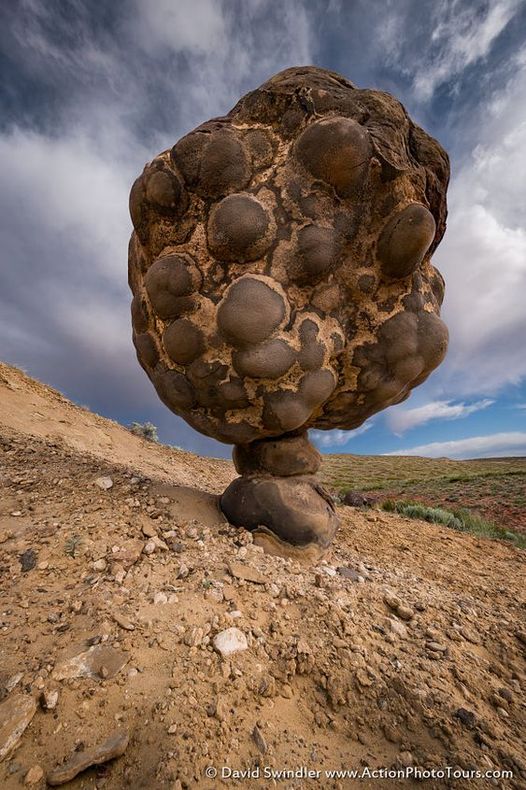 David Swindler
David Swindler2. The Al Naslaa rock formation, located south of Tayma oasis, Saudi Arabia
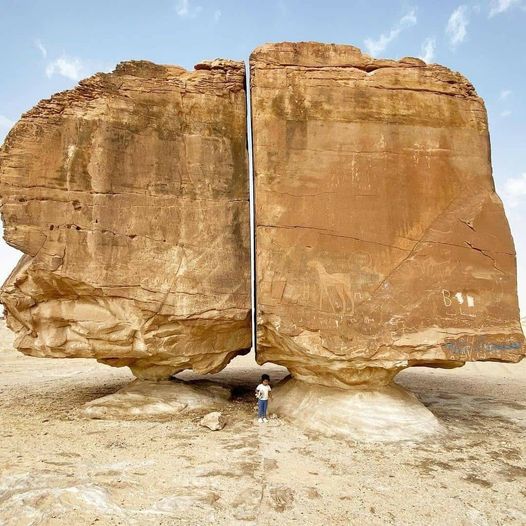 zazahardyinsaudi
zazahardyinsaudiThis spectacular rock measures about 6 m high and 9 m wide, and is neatly split down the middle into two parts, such that it appears as if it was performed with the precision of a laser beam. Each part of the rock is balanced on small pedestals, and there are numerous petroglyphs present of the south-east face of the rock.
3. The Mushroom rock (also called Pedestal rock) in Tamanrasset, Saharian desert, Algeria
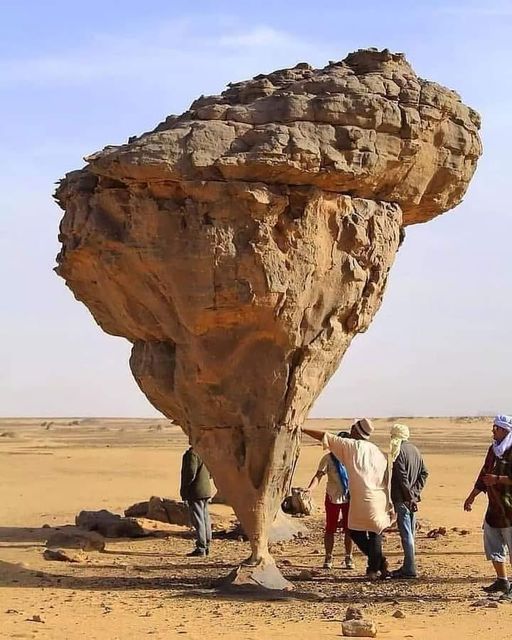 Credit: @tourism_algeria
Credit: @tourism_algeria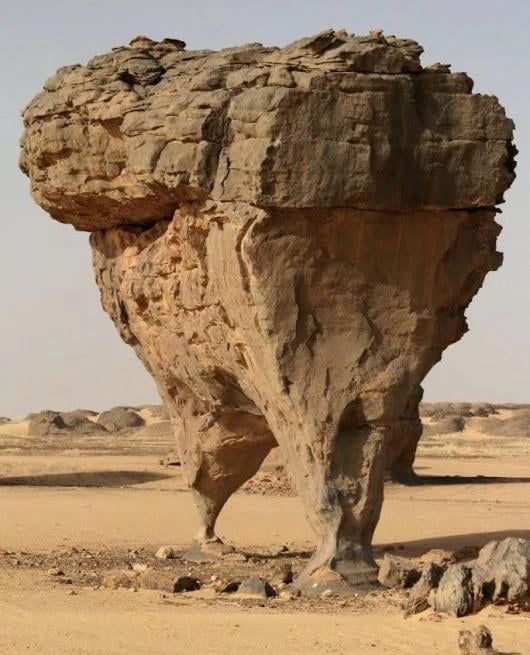 Another perspective of the rock showing both pedestals
Another perspective of the rock showing both pedestalsThis massive rock owes its particular shape to the action of wind erosion and weathering, and the different rate at which these occur at the top and bottom of the rock.
4. The Pinnacles at Gunung Mulu National Park in Sarawak, Borneo island
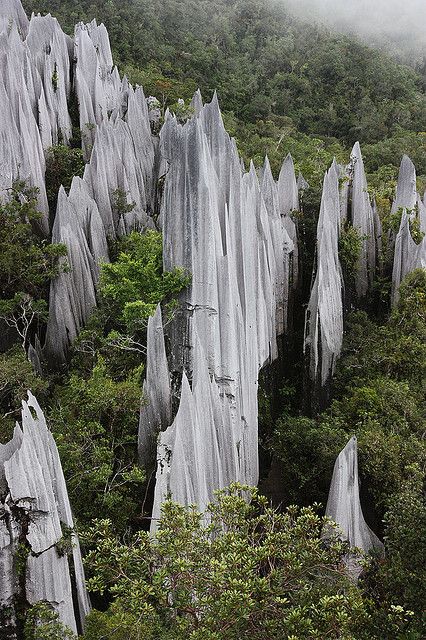 Flickr
FlickrThe Gunung Mulu National Park consists of a number of impressive geological formations of caves and pinnacles. There are three mountains within the park: Mount Mulu standing at 2,376 m high (7,795 ft), Mount Api at 1,750 m (5,740 ft), and Mount Benarat at 1,858 m (6,096 ft). These limestone pinnacles are located among the jungle on the slopes of the upper part of Mount Api. Their unique, razor-like, sharp forms extend to a height of about 50 m from the ground.
5. The Balanced Rock in the Garden Of The Gods in Colorado Springs, Colorado, United States
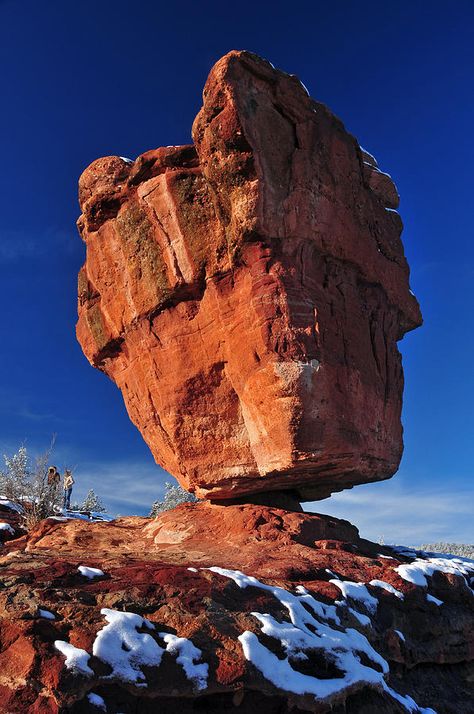 John Hoffman’s Photography
John Hoffman’s PhotographyThis phenomenal red sandstone rock is said to be about 290-million-year-old, rising 35 ft from its pedestal base and weighing about 700-ton. Some concrete was poured around its base to prevent tourists from cutting out a chunk to take away, but apart from that, there is nothing much to protect the rock from erosion. Although the rock surrounding Balanced Rock eroded, the massive rock itself did not, and it is believed it won’t be falling, rolling, or crashing anywhere, anytime soon. Unless perhaps in the event of a major earthquake.
6. The ‘Hedgehog’ rock formation at Tassili n’Ajjer National Park in Algeria
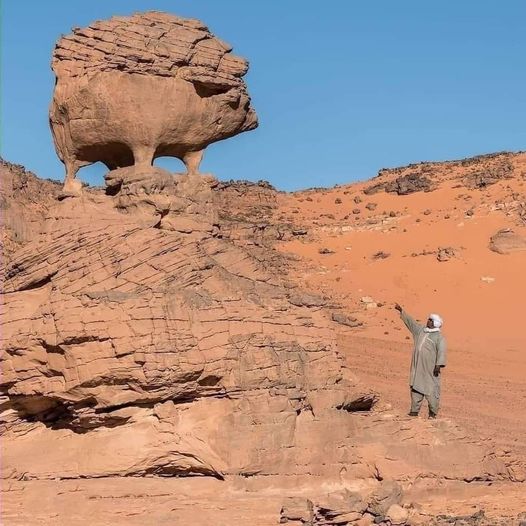
Tassili n’Ajjer is a national park in the Sahara desert and classified as a UNESCO World Heritage Site. Situated on a vast plateau, it consists of geological formations of rock forests, composed of eroded sandstone, which somehow is evocative of a lunar landscape. There are about 300 natural rock arches formed, along with deep gorges and permanent water pools.
7. The “Pointing rock” in Little Finland, Clark County, Nevada, United States
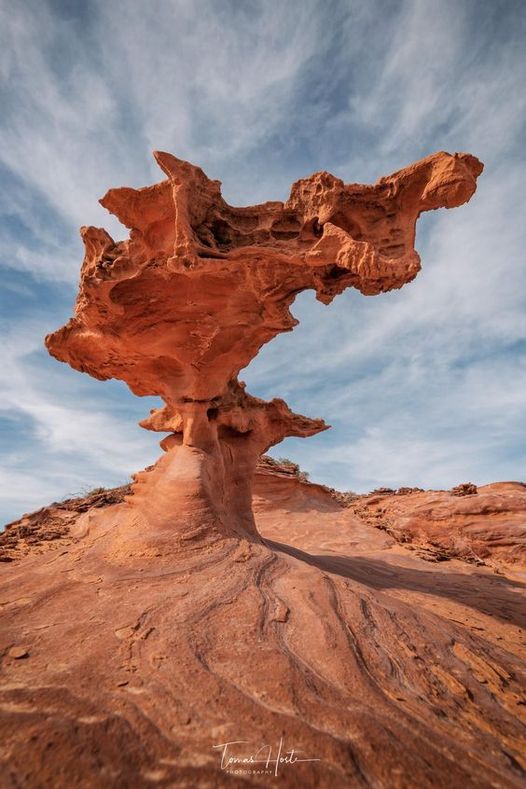 Tomas Hoste Photography
Tomas Hoste PhotographyLittle Finland is a scenic red rock area, known for its red rock scenery and unusual rock formations, which are composed of red Aztec Sandstone, fossil sand dunes.
8. Mushroom rock formation in the Mushroom Rock State Park, Kansas, United States
 Franklin B Thompson (kansasexplorer)
Franklin B Thompson (kansasexplorer)Mushroom Rock State Park is famous for its mushroom rock formations, which are the remains of beach sands and sediments of the Cretaceous Period, about 144 to 66 million years ago. Among the several rock formations, there are two mushrooms and a giant shoe rock, and the largest rock measures 27 feet in length.
Read Also: 18 Most Bizarre Mushroom And Fungi Species In The World
9. The Árbol de Piedra Rock Tree in the Eduardo Avaroa Andean Fauna National Reserve of Sur Lípez Province, Bolivia
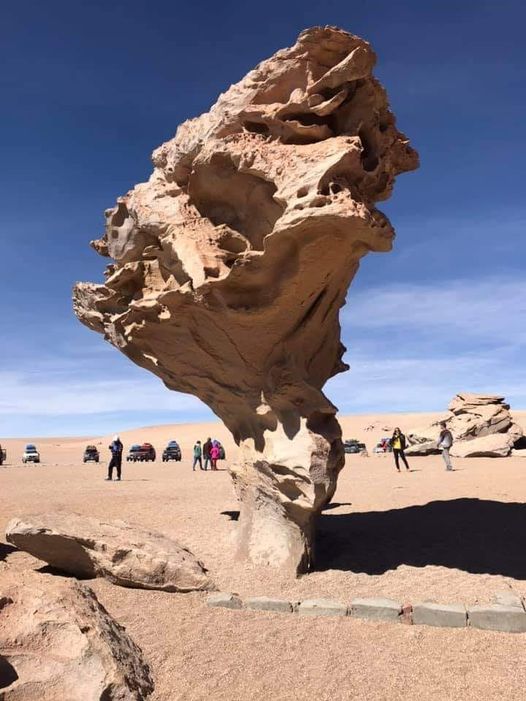
This isolated rock formation, known as the “Stone Tree”, protrudes out of the altiplano sand dunes and is shaped like a stunted tree of about 7 m in height. Its specific shape, especially the thin stem, is the result of strong winds carrying sand and eroding the soft sandstone.
10. The Chicken and Mushroom Rock Formation, White Desert Protected Area (Sahara el Beyda) in Egypt
 Credit: Education Images/Universal Images Group (via Getty Images)
Credit: Education Images/Universal Images Group (via Getty Images)11. The El Tormo Alto rock formation in Ciudad Encantada, Cuenca Province, Castilla-La Mancha, Spain
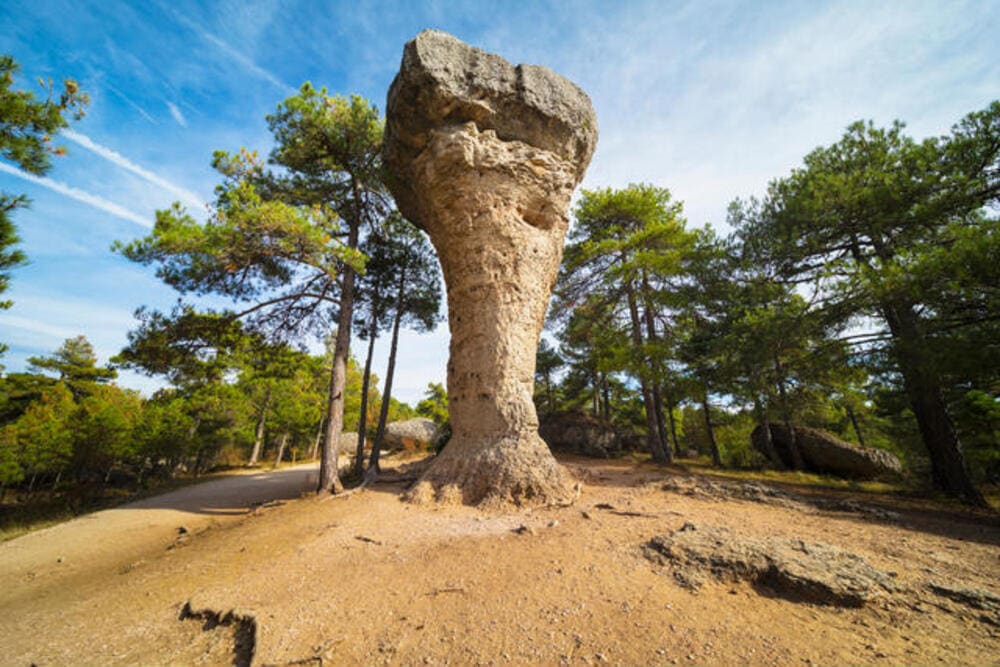 Credit: Classic Image / Alamy Stock Photo
Credit: Classic Image / Alamy Stock PhotoThe rock formations are mainly composed of dolomite and limestone during the Cretaceous period, about 90 million years ago. They have obtained their distinct shape due to erosive forces like weathering and the waters of the nearby Júcar River.
12. Mushroom rock formation in Goblin Valley State Park, Utah, United States
 Credit: Whit Richardson (gettyimages)
Credit: Whit Richardson (gettyimages)The Goblin Valley State Park features thousands of hoodoos which are locally referred to as ‘goblins’. These goblins are mushroom-shaped rock pinnacles, and are rather small, but some of them can be several meters high. Their striking shape is due to the top layer of rock being erosion-resistant, while the softer sandstone in the bottom layer is more prone to weathering.
13. Wahweap Hoodoos, Grand Staircase-Escalante National Monument near Big Water, Utah, United States
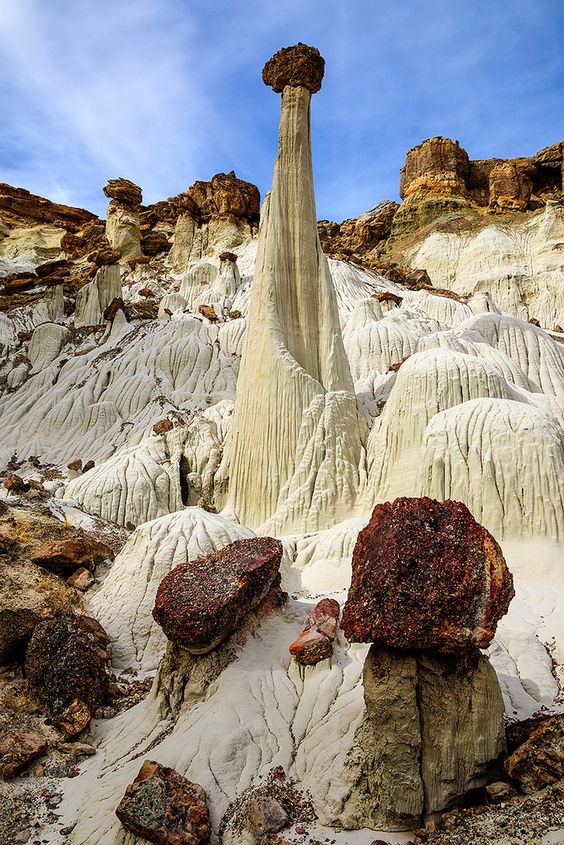 Flickr
FlickrWhite hoodoos are definitely not a usual sight in Utah, since the red rock wonders are more common. These hoodoos are white as they are composed of Entrada Sandstone and are about 160 million years old. They are located not far from The Toadstools, in Grand Staircase-Escalante National Monument.
14. The Mushrooms, in Grand Staircase-Escalante National Monument, Utah, United States
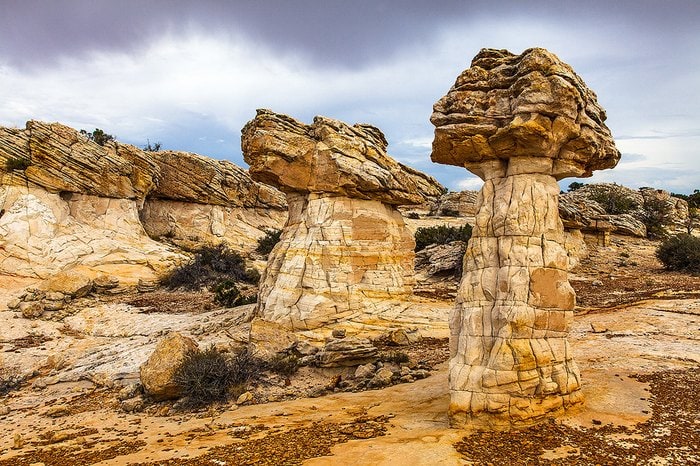 Flickr
Flickr15. Lacy sandstone formations in Navajo sandstone, located in Edmaier’s Secret area, Vermilion Cliffs National Monument, Utah, United States
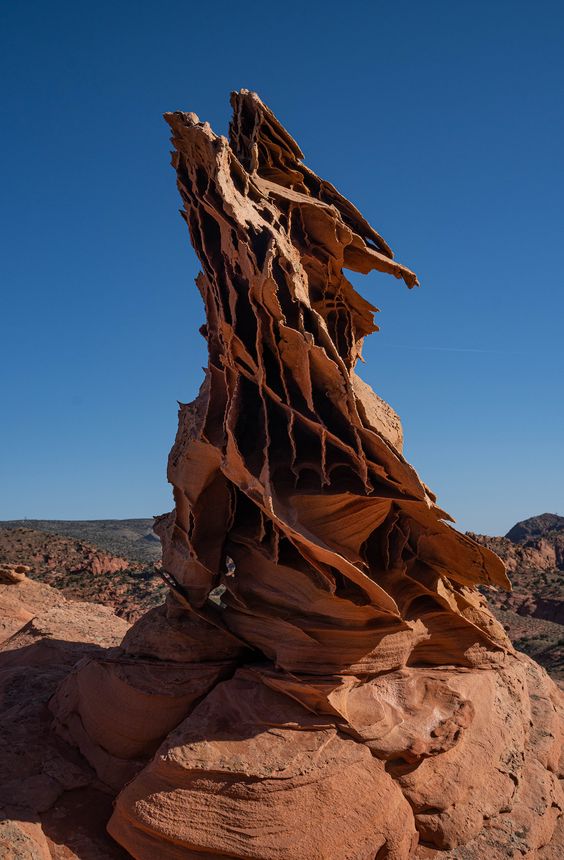 Credit: Stan Wagon
Credit: Stan WagonThese “Fairy chimneys” came into existence as a result of a geologic process that began millions of years ago, when volcanic eruptions spurted ash that eventually hardened into tuff, a porous rock which was covered by a layer of basalt. As millennia passed, the softer tuff went through erosion, turning to tall pillars that stand as high as 130 feet. As the harder basalt erodes at a slower rate, a protective, mushroom-shaped cap formed over each one.
16. The Stone Mushrooms near Beli Plast village in Bulgaria
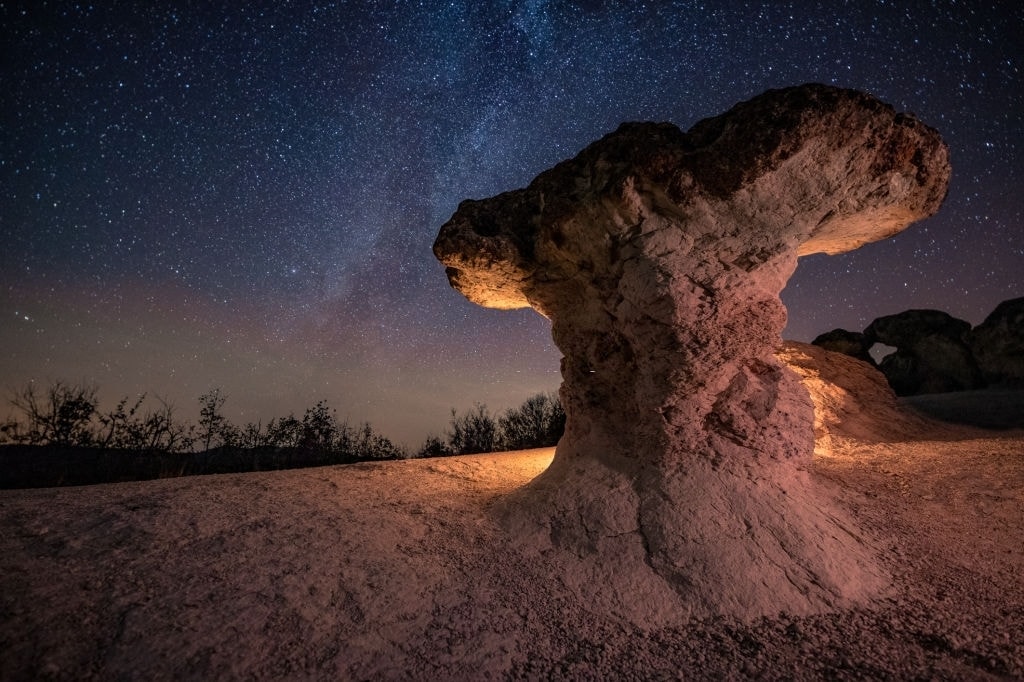 Credit: Mincho Minchev/gettyimages
Credit: Mincho Minchev/gettyimagesThese mushroom rocks are formations from volcanic activity about 20 million years ago, when the site was an ocean floor. As the landscape transformed over millennia and the rocks got exposed to the atmosphere, they gradually got shaped into these unusual forms from erosion and weathering actions.
17. Elephant Rock, also known as Jebel Al-Fil, in Al Ula, Medina region, Saudi Arabia
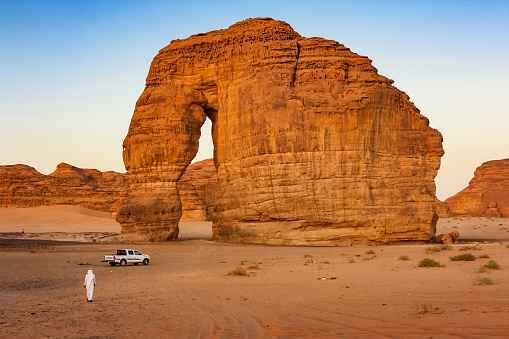
This spectacular formation of about 52 meters high resembles an elephant with its trunk touching the ground. It is one of Al Ula’s geological marvel that became an iconic landmark and a wonder to see in the daylight or at nighttime.





